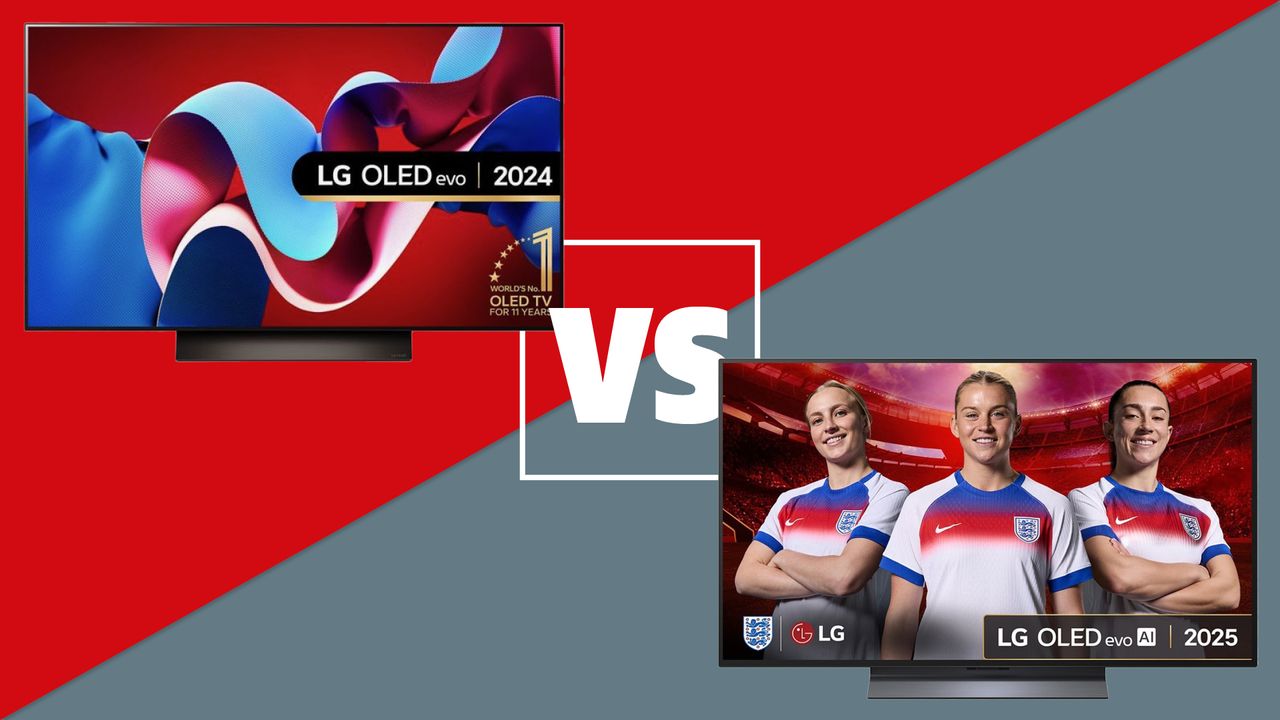
OLED 48-Inch Showdown: C5 or C4?

LG’s C-series OLED televisions have consistently ranked among the best available, offering a compelling combination of picture quality, features, and value. These TVs come in a range of sizes to suit different viewing spaces, from a compact 42 inches to a massive 83 inches. For many, the 48-inch model represents the sweet spot, offering a large enough screen for immersive viewing without dominating the room. If you’re considering a 48-inch C-series OLED, you might be weighing up the benefits of the latest model, the C5, against the still-excellent C4 from the previous year. Both TVs earned a five-star rating for their 48-inch versions, but key differences exist. Let’s delve into a detailed comparison to help you decide which one is right for you.
Price Comparison
The initial launch price for both the 48-inch C5 and C4 was around £1500. However, as is typical with electronics, prices have dropped since their release. The C4, being an older model, has seen a more significant price reduction. You can currently find the C4 for approximately £800, while the C5 is available for around £1300. This represents a substantial saving of £500 by choosing the older model. Keep an eye out for even greater discounts during major sales events like Black Friday, where the C4 is likely to be even more heavily discounted than the C5.
Winner: LG C4
Design: A Matter of Subtle Differences
In terms of design, the C5 and C4 are remarkably similar. LG’s C-series OLEDs have maintained a consistent aesthetic in recent years, with these models bearing a close resemblance to the C2 from 2022. While some might find this lack of significant design changes disappointing, the existing design is functional and visually appealing. Both 48-inch models feature the same central pedestal stand as their larger counterparts (the 42-inch model uses feet instead). This stand design can pose a challenge for soundbar placement, so it’s crucial to measure your available space before investing in a soundbar. The C5’s Magic Remote includes a new AI shortcut button and the ability to control smart lightbulbs, but otherwise remains unchanged. Frustratingly, it’s still not rechargeable or backlit.
Winner: Draw
Features: The Edge Goes to the Newer Model
While the C5 and C4 share many features, the C5 boasts a few key upgrades. Both TVs utilise the same WOLED screen panel and lack a heatsink. However, the C5 features a newer processor, the Alpha 9 Gen 8. This processor leverages AI for enhanced upscaling, improved colour accuracy, and a new chatbot designed to diagnose and resolve issues with the TV’s picture or sound. Otherwise, the feature sets are nearly identical. Both support HLG, HDR10, and Dolby Vision HDR formats (but not HDR10+), offer four HDMI 2.1 ports, and provide a comprehensive suite of gaming features, including 4K/144Hz (as well as 4K/120Hz), VRR, ALLM, and Dolby Vision gaming. The C5 also includes the Xbox app, previously exclusive to Samsung TVs, allowing you to stream games directly to the TV without a console and connect a controller wirelessly. This is made possible by LG’s webOS 25 operating system, compared to the C4’s webOS 24.
Winner: LG C5
Picture Quality: Incremental Improvements
The C5 offers a brighter picture with excellent detail, even in the brightest areas. Colour shading is strong, and motion appears natural. However, colour volume can sometimes drop in darker parts of the image, particularly affecting skin tones and making the image look flatter. This issue is not consistently present and might not be noticeable to all viewers. Overall, the C5 delivers a superb picture. The C4 also boasts a rich and engaging picture with punchy, warm colours and excellent handling of bright highlights. It’s meticulously detailed, revealing textures that other TVs might miss. However, the Dolby Vision Filmmaker mode can appear somewhat dim. While the C5 offers a slightly better picture, the improvements are modest and primarily attributed to the new processor rather than significant advancements in screen technology.
Winner: LG C5
Sound Quality: A Shared Weakness
Audio performance has historically been a weak point for LG’s C-series TVs. Both the C4 and C5 struggle in this area. The C4 can exhibit distortion with low-end effects and lacks projection and scale. While dialogue is clear and dynamics are delivered with punch, the bass response is lacking. The C5 features the same 2.2-channel 40W speaker system as the C4, resulting in similar performance. The sound can feel somewhat flat, with much of it emanating from the centre of the screen. The low-end response is also problematic. LG’s AI Sound mode attempts to improve separation but sacrifices fullness, resulting in a thin and unnatural sound. Even in Cinema mode, the sound remains flat and directionless.
Winner: Draw
Final Verdict: Value Proposition
The LG C5 offers marginal improvements in picture quality and features compared to the C4. However, considering the similarities in design and sound quality, coupled with the £500 price difference, the LG C4 represents the better value proposition. The savings can be invested in a decent soundbar to address the audio shortcomings shared by both models.



